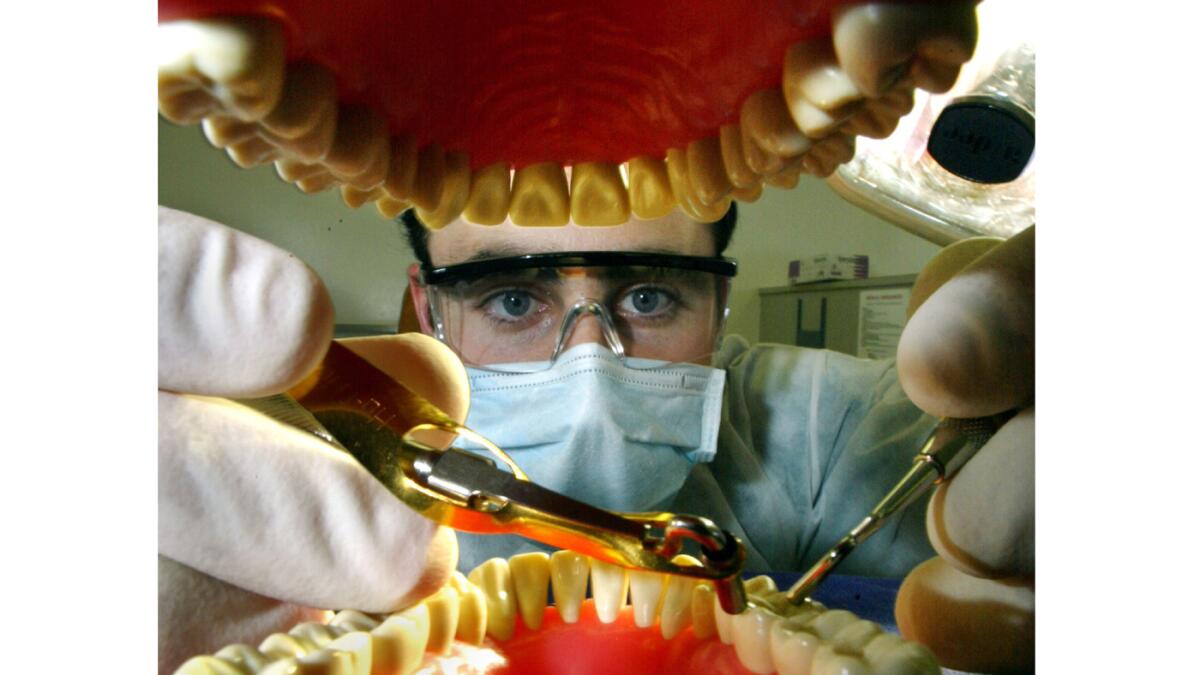Should you be worried about the mercury in your teeth?

File photo of dental student working on a practice set of teeth with installing amalgam.
There is no doubt in many consumers’ minds that mercury is an environmental hazard; many avoid eating fish, such as tuna, known to be high in the neurotoxin. While numerous studies have linked fetal and infant mercury exposure to impaired brain and nervous system development, recent Environmental Protection Agency monitoring has shown that most Americans have blood mercury levels below those associated with negative health effects.
Links between mercury levels and cancer have been shown in animal studies. “No human data indicate that exposure to any form of mercury causes cancer, but the human data currently available are very limited,” the EPA says.
Most environmentalists agree that the mercury found in fish is primarily from industrial waste. But Joseph Mercola, an osteopathic doctor in suburban Chicago who researches and writes about alternative health, is among those who believe that waste from mercury amalgam fillings gets into the water through improper disposal of dental waste, human waste and through cremation.
The EPA agrees that up to half of environmental mercury pollution is from dental waste, and the agency is working toward a regulation to require dental offices to use separators that remove the metals from dental wastewater.
Mercury amalgams have been banned in three countries, Norway, Denmark and Sweden, after studies indicated that mercury levels in placental and fetal tissue corresponded directly to the mother’s number of mercury fillings, and a recent Food and Drug Administration advisory committee recommended a similar ban in this country, due to a lack of clinical research proving the safety of amalgam fillings.
And although hundreds of studies have shown the dangers of mercury poisoning, more research is needed to determine whether mercury vapor from amalgams is harmful and if removal will make a difference.
ALSO:
New super-foods, from baobab to turkey tail, come with promises and caveats
For vegetarians and vegans, it’s a new world of appealing options
For new dietary guidelines, U.S. panel looks at the whole plate





